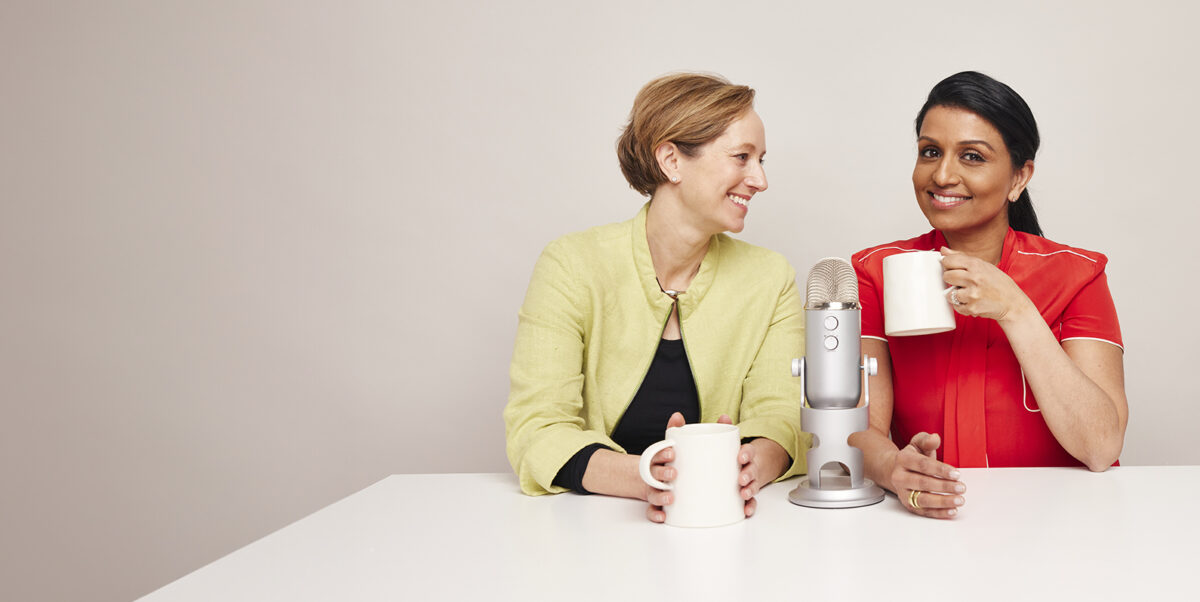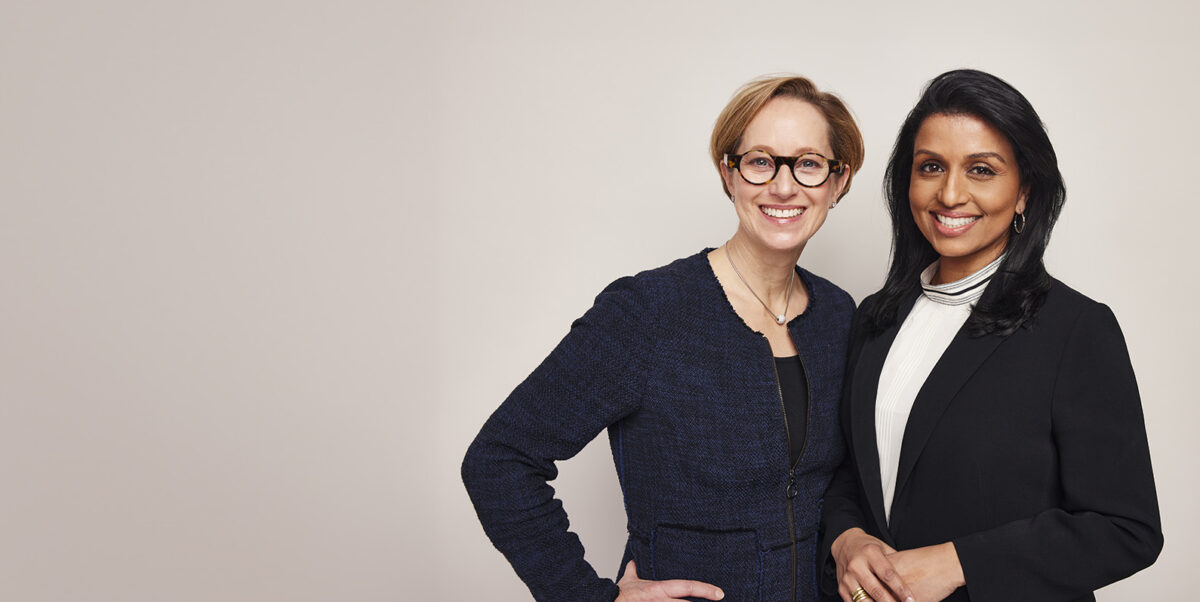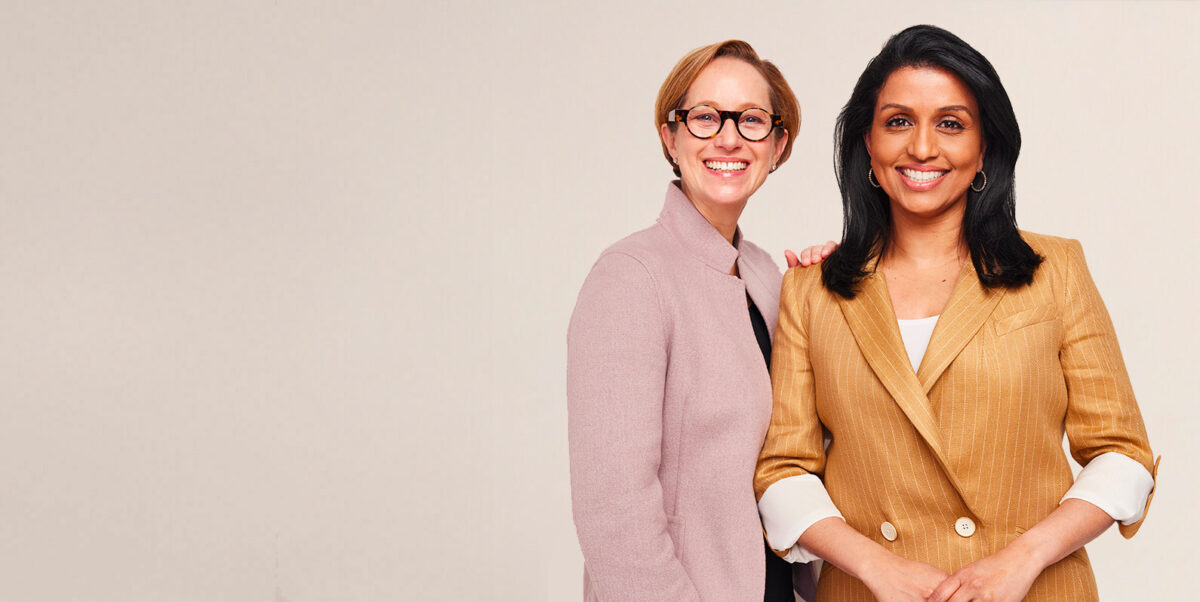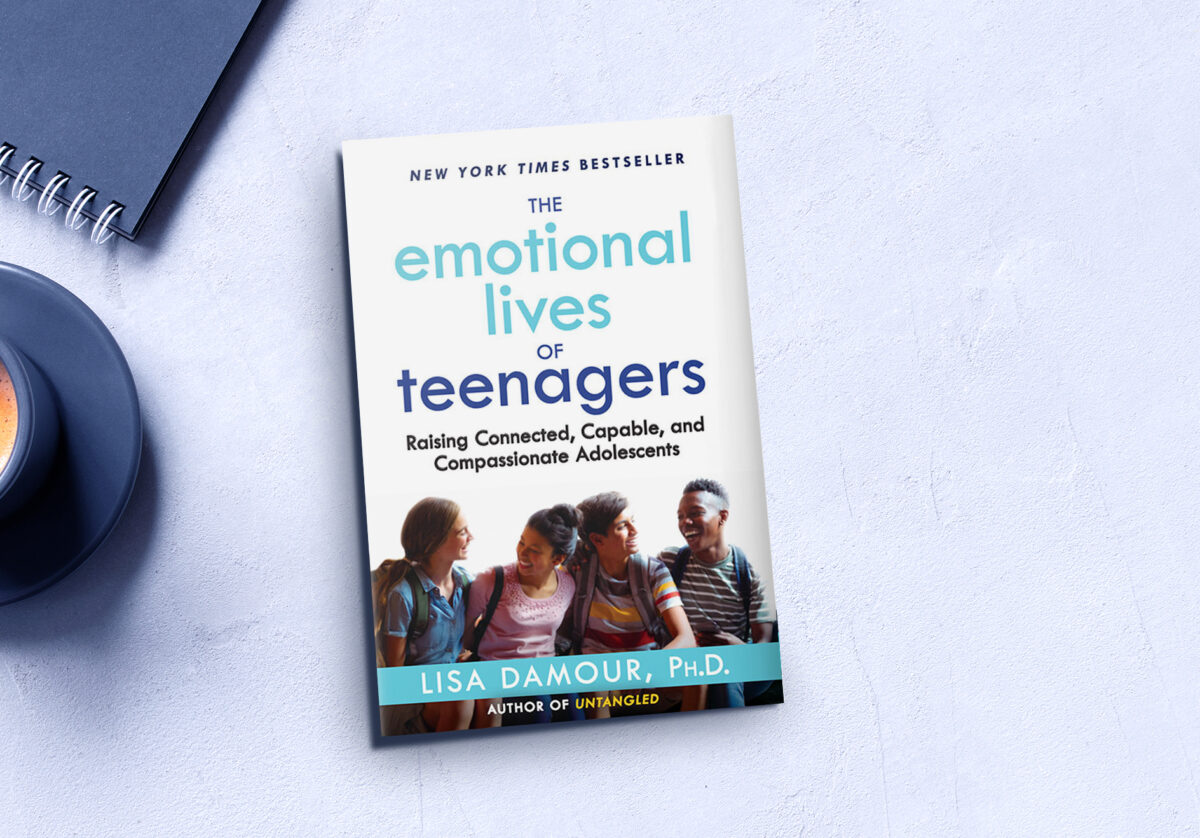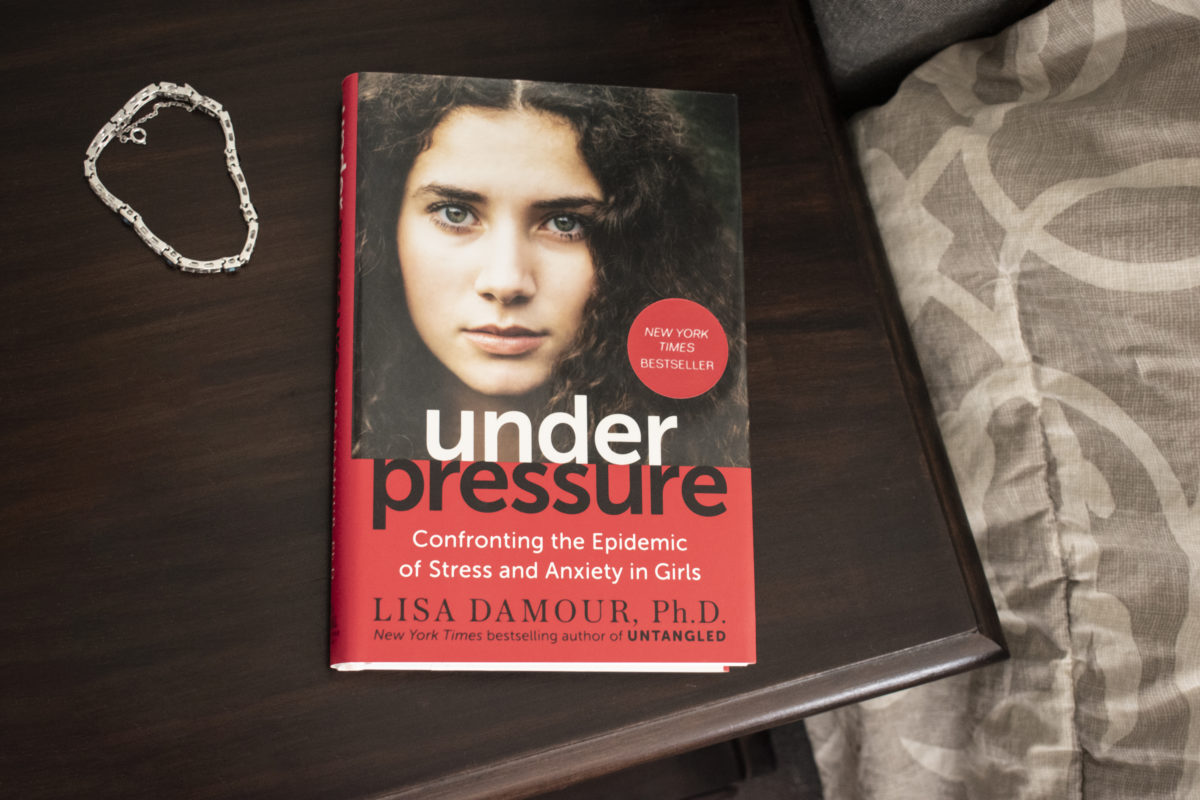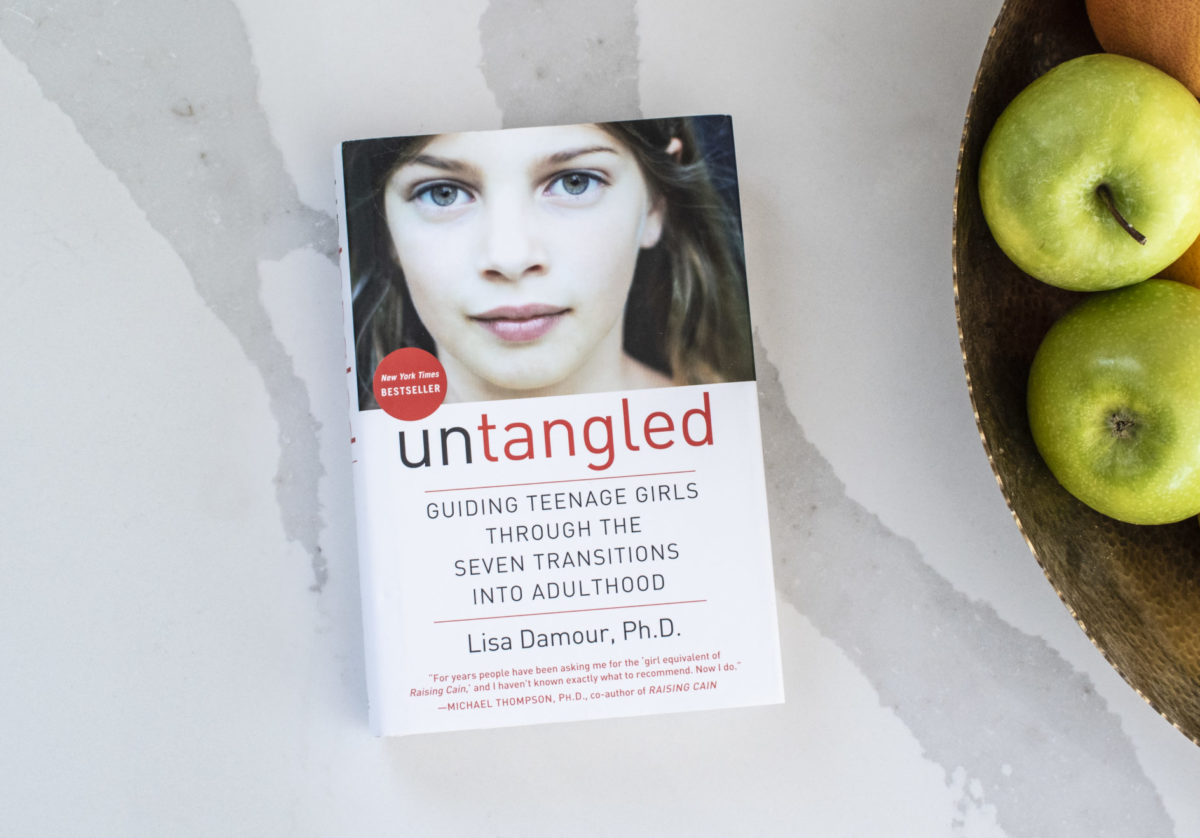How do we help our tweens and teens thrive—even in tough times? Dr. Sue Varma joins Dr. Lisa & Reena to break down the science of optimism and the four key pillars of mental well-being. You’ll learn how to model emotional strength for your child, build resilience in the face of anxiety and setbacks, and adopt daily habits that boost happiness. The perfect episode for parents looking to reset and reenergize during summer!
June 12, 2025 | 34 min
Transcript | ENCORE: Practical Optimism with Dr. Sue Varma
The Ask Lisa Podcast does not constitute medical advice and is not a substitute for professional mental health advice, diagnosis or treatment. If you have concerns about your child’s well-being, consult a physician or mental health professional.
The following transcript has been automatically generated by an AI system and should be used for informational purposes only. We cannot guarantee the accuracy, completeness, or timeliness of the information provided.
Reena Ninan:
Encore Episode 223, practical Optimism with Dr. Sue Varma.
I just find it difficult in the dead of winter. February is a hard month, Lisa. It’s so hard. Why?
Dr. Lisa Damour:
Reena try doing February in Cleveland.
Reena Ninan: You always win.
Dr. Lisa Damour: Not that fun.
Reena Ninan:
You always win that.
Dr. Lisa Damour:
It’s really not that fun. We have our moments, but it is where true believers really Cleveland has its really strong, strong loyalty and this is how it shows.
Reena Ninan:
I love that. I love that. Well, I find it’s February is sort of the time of the school year where I feel like stuck in the mud or the snow. It’s kind of hard to keep trudging forward sometimes. How do you stay true and find optimism? I just think it’s hard.
Dr. Lisa Damour:
Yeah, no, it’s a hard time. And it’s interesting, Reena, clinically, I can tell you my caseload and my colleagues’ caseloads, they always build in February that whatever else is going on, things start to really, people really are feeling the weight of the year. So it’s not just a feeling on top of everything else. It’s not just a feeling I have. I consistently see. Yep, absolutely. Absolutely.
Reena Ninan:
This is exactly why I couldn’t be more excited to have this next guest who has a book, an incredible book called Practical Optimism, the Art and Science and Practice of Exceptional Well-Being. Dr. Sue Varma is going to join us. She’s a psychiatrist and a cognitive behavioral therapist based in New York City. She’s got over two decades of private practice experience and today her book is officially out. You’ve seen probably some of her advice in the New York Times over the past few weeks. She believes that physicians have a duty to not only take their patients from a state of dysfunction to function, but also from functional to optimal. I love that. Dr. Sue Varma, welcome.
Dr. Sue Varma:
Thank you so much, Reena. Thank you, Lisa. It’s such a pleasure to be here. Thank you. I’m so excited to
talk to you both today.
Dr. Lisa Damour:
We are so glad to have you here. And I will say I got to read a copy of this book early because I had the honor of blurbing it, Reena and Sue. I don’t blurb everything that comes my way. I pick and choose.
Reena Ninan: That’s true.
Dr. Lisa Damour:
And I was so excited as I got into this book to just see how gorgeously Sue took what we know on the clinical side and the academic side and translated it for immediate practical use in the hands of, we have a lot of parents who listen. I think there were older kids could get a huge benefit out of it, but we also know kids do as well as their parents are doing. So this was an incredible gift to families and adults. And Sue, I’m just so grateful to you for writing it.
Dr. Sue Varma:
Thank you so much Lisa, and I’m so grateful to you for you reading it. You blurbing it. I’m huge admirer of everything that you do. And every day I feel lucky to get a little snippet of some wisdom from you. And I look forward to it on social media. I share it with parent friends with patients. So thank you for saying that. And really that’s what we need right now is very concrete, actionable, tangible steps that also really recognize and honor what people have been through. It’s not enough. And that’s what I say how this sort of differentiates optimism from toxic positivity is that we don’t want to say, Hey, just look on the bright side without really acknowledging what the suffering that people are experiencing for a variety of reasons and then also giving them a path forward. And so that’s the practical side of the optimism.
Dr. Lisa Damour:
I love it. And Sue, actually that gets to something I want to have us start with, which is your backstory. So you were a trainee in a New York hospital on September 11th.
Dr. Sue Varma: Yes.
Dr. Lisa Damour:
So here you are, and I remember what it was like to be a green clinician learning as you go and suddenly you are dealing with caring for people, going through incredible stress and trauma and helping them move towards resilience and growth. What did that moment in your career teach you? What did you learn through that experience?
Dr. Sue Varma:
Yes, I saw how unbelievably resilient people are by nature. I feel like in many ways it can almost be our default setting and then life gets in the way. None of us are going to get to leave this world without grief and loss and disappointment. Some of it will be the big T, the life threatening trauma that many people experience that day. And some of it will be the little t’s, the breakups, the divorce, the job loss. And what I learned was when I met these patients later on, I was a trainee at that point. I got tons of education, sought it out and eventually became the medical director of this 9/11 mental health program. And what was so amazing was that the program was integrated into the fold of the medical and the primary care. And what I love about that, and that really is an ideal model, is that people then take their mental health seriously on par with all the medical symptoms.
So people would come in for screenings, they would come in for battery of tests, for asthma, for GI problems. And as we know, people had many medical problems. Cancers related to 9/11. We saw rescue recovery, first responders, people who were residents working down there. And many of these people witnessed loved ones, family members die or get seriously injured or were themselves seriously injured. And I began to get very interested in the idea of resilience. And one of the features of resilience was optimism. Now no one talks about optimism. It’s considered this feel good. What is this Pollyanna positive thinking nonsense? There’s no science behind it. And then I spent the last 20 years looking for the science and really recognizing that while 25% of optimism is genetic, I always thought you’re either born with it. This sort of glass half full thinking, I realized actually 75% of it is within our hands. And what is so interesting is that these are all skills that each one of us can learn. Coping skills, emotional regulation skills, reaching out for support. And then I realized that, wow, how amazing would it be that we don’t break, that we bend when something bad happens to us.
Reena Ninan:
I want to ask you about that, Sue. Why do you think it is that in the midst of horrific tragedy, some people manage to survive and then later thrive? What’s the difference between what makes somebody completely broken and unable to get up and somebody able to find their way?
Dr. Sue Varma:
Yes. What’s so interesting is one thing that I learned is one of these experiments that I was fascinated by, and I was very much inspired by the work of Dr. Martin Seligman, founder and father of positive psychiatry, one of them at least. And this study of learned helplessness. And what I found so fascinating, what we had always thought, so just to give you a little background about the study, is that the study had been done with dogs. Were not promoting animal testing and cruelty to them. But what we learned from this experiment decades ago initially was that when you treat dogs and then it was later applied to humans, you keep shocking them. You keep exposing them to adversity. At first you give them a way out, but then when you don’t, they learn their helplessness. And years later, these researchers came to find out that it’s not that you learn helplessness.
What these dogs, when they were allowed to be free, some of them didn’t escape. They were like, why bother? They got depressed. They’re like, I don’t need to leave. Even though the doors were open, they were shocked, then the doors were open and they never left compared to people who realize, or dogs that realize that they could leave. And the difference is that you don’t learn your helplessness, you learn your agency. And they actually came back 40 years later and revised it. So our default mode is to sometimes give up. But if anybody in our life gives us just a little bit of support and say, Hey, the door is open, you can leave now, the shock is over. If we can see a little glimmer of hope at the end, we’re more likely to take it and say, you know what? There is a light at the end of the tunnel.
So I think some of it is genetic that we’re hardwired. Some of it is early childhood experiences of being exposed to abuse or trauma or loss or neglect or not having parenting or secure attachments. But a lot of it is learned over time. And I think if we can see any mastery, any sort of skill building like, Hey, I did this and we can carry it forward. I think mastery in one area lends itself to mastery in another. And I know that there’ve been so many times when I’ve taken on challenges and I’m like, I can’t do this. And I’ve had to be reminded by people that love me and they’re like, no, you are doing it. You can do it. What did you do in this other aspect? See it worked out for you there. So even I very much have to practice this. And that’s why I call it there’s a practical aspect, but then there’s a practice aspect. We have to practice optimism.
Dr. Lisa Damour:
I love that, Sue. And it’s funny, I think about our clinical training and one of the things I remember learning along the way is that what therapy does is it gives people options. It doesn’t tell ’em what to do, it gives people options. And that’s what you’re saying, there’s an open door. You can go through that open door. So thinking about your work and what you’ve brought across in this wonderful book, if there are listeners thinking, okay, well let’s put it on the ground. What are some things I could do to feel a little bit better? What would you say? You have these wonderful pillars of practical optimism in the book. Walk us through a couple of these.
Dr. Sue Varma:
Yes. So the first one, they’re in no particular order, but I like it because the first one is purpose. And purpose could be your purpose in life, or it could be what your purpose is in an interaction with someone. So let’s say you’re having difficulty in terms of do I want to confront them or not and say, what is my intention? And just the fact that you stop and pause to say, what is my intention? What is my desired outcome? Is it to get closer to this person? If that’s the case, I’m probably not going to yell and reprimand them. I might seek to understand. So just having pause is very helpful sometimes in life if we feel as if we don’t have a purpose, because we’re seeing that a lot of people are experiencing burnout right now. A lot of people are experiencing languishing where you’re not fully depressed but you’re just not feeling great.
Sometimes recognizing that if you can’t find a purpose, it’s on you to create it. And this idea from cognitive behavioral therapy of behavioral activation of putting the cart before the horse, not waiting for motivation, not waiting for someone. I would joke to meet with my patients who are like, I’m single and I really want to meet somebody. And I’m like, they’re not going to fall from the ceiling into your lap in this office. It’s what we do in between sessions where you’re out in the world and creating those opportunities for yourself. And so sometimes we don’t feel motivated, but that’s okay. And I think that action begets more action. So if you’re able to start a little bit of something, and then in that chapter I talk about role remake at your job or job crafting, this idea of if you’re in a job where you’re like, I’m not experiencing meaning I feel like I’m making the company money.
What am I doing for myself? What am I doing for my family? Your purpose does not have to come from your job. It’s great if it’s connected to your paycheck, but it doesn’t have to. And you can ask your boss, are there little things that I can do that are more aligned with my interests, my hobbies? And it might be something like doing a charity race with coworkers if you want. So that’s just one pillar. And I talk about different ways that a person can achieve purpose, even giving back. We know that adults who volunteer live longer. We know that children who volunteer teenagers or who help younger kids with homework have less inflammation, less likely to have cardiac disease later in life. So there’s so much science behind altruism and giving back. And if you don’t feel like you have a purpose, so much of depression turns us inward. It forces us to ruminate when we’re out in the world, engaged with other people, engaged in hobbies, engaged in awe. This idea of experiencing something bigger than yourself. It could be going to a museum, it could be going to a beautiful national park. It takes you out of your mind and it short circuits this whole rumination cycle. So that’s just one pillar and there’s so many, and I’m happy to get into them.
Reena Ninan:
When you talk about victimhood, the narrative that sometimes goes in your head, why do some people, when bad things happen, continue to tell themselves that they’re a victim? And how does that mindset negatively affect their life?
Dr. Sue Varma:
Again, some people might be hardwired to experience pessimism. And what was interesting about what I learned is that pessimism and optimism are not two ends of the same spectrum. They’re actually separate entities. I’m glad you asked about this because victimhood is pessimism. It’s assuming that things that happen in the world are meant personally to harm you, that you have no agency, that you have no control, and it keeps you trapped. You think that this negative thing will last forever. You think that it is an indication of who you are as a person, as a total failure, not just in one circumscribed aspect, and it paralyzes you. While it may be your default setting, it doesn’t mean that you can’t simultaneously ask yourself to reframe the situation and say, okay, this happened to me. Okay, I can continue to find myself a victim, but what’s the utility?
And when I was working with 9/11 patients, that question is something that I learned in my work with them because they would say, Dr. Varma, I know what you’re saying, but a terrorist attack could happen tomorrow. So why would I go back on the subway? Why would I go back to downtown Manhattan? And I were dumbfounded because you got me stumped. You are right. These things do happen and they can happen. There was a huge crane incident in New York City. I mean, things fall from the sky, but what’s the utility is that if we allowed ourself to believe that would happen every single day, then none of us would ever leave our house again. So in no way am I ever trying to diminish what a person has been through the trauma that they have suffered. And I want to acknowledge that it was horrific what happened that day.
And you could literally fill in the blank with whatever your personal loss tragedy is, and at the same time can you find it within yourself to push through. And so to me, the resilience is the ability to bounce back from adversity, but optimism is about the ability to flourish in the face of it. And it says, I know that these things can happen. One of my favorite quotes in the book that I share is that even if I knew world would end tomorrow, I would still plant my apple tree. And there’s some controversy about who cited Martin Luther King, Martin Luther, but I just loved it and I said, we don’t know who to attribute it to, but even still, these things will happen. So victimhood, yes, you can sit in it, but what happens is then it festers within you in the form of either shame or guilt. But what it does is diminish your personal agency. And that’s what this book is all about, is acknowledgement, having compassion towards yourself, something that I struggled with and I talk about that in one of the chapters, but then what is a way forward and out of it?
Dr. Lisa Damour:
Well, actually just to pick up on that, on the compassion piece. So earlier this season we had Dr. Tracy Baxley, come on and talk with us about compassion. And one of the things that comes up in your book is struggling with personal compassion and using negative self-talk, running one self down. So when it comes to negative self-talk, which I think many of us can be prone to at times, how do we flip the script on this? How do we move into a place of being gentler with ourselves and more accepting?
Dr. Sue Varma:
When we talk about self-compassion, I’m also very much admirer of the work of Dr. Kristen Neff and she talks about the ideas of three common threads is one is a mindful observation of what you’re experiencing. So I always say to my patients, notice these negative thoughts the way you would notice airport baggage carousel. You see it go by, you may have comments and judgment about it, but you don’t go home with somebody else’s baggage.
Dr. Lisa Damour:
Love that. Okay, I am stealing that. That is the best description ever. I have heard of letting things go by that is and funny at the same time. Okay, keep going, keep going.
Dr. Sue Varma:
So don’t invest in these negative thoughts, be aware of them and let them go. The second part is the acceptance of it, of, okay, I have this. Okay, this happened to me, or Okay, I messed up, I did this, I screwed up. And then the common humanity piece, which I love so much because it says, am I the only person who has ever screwed up in the world? I’m not alone in this. We all do this. This is what bonds us. I’m not the first person. And I think for me, what’s really helpful is hearing about other people’s difficulties. And they’re like, Sue, I struggled with the same thing. Do you know I went through this? Why do you beat yourself up over this? And all of these three things then gives you a path forward after you accept, after you observe and mindfully notice and after you recognize that you’re not alone, it then allows you to move forward.
And what I love and I talk about in the book is the beauty and the science behind the self-compassion that when students take tests, they took a math test, they failed it. When they did self-compassion exercises and asked themselves these three questions, are you alone in this? Can you observe it? Can you accept it? They actually came back and beat the kids that didn’t and scored higher than those who failed, but then did do the self-compassion exercises. When parents who are struggling with children and are beating themselves up because they feel helpless and hopeless, do self-compassion exercises, they are more effective with their children. So this is not just one of those woo woo concepts. There’s real science behind it and everything in this book, whether it’s optimism or self-compassion, I talk about the studies. All of these benefits, you see them in the form of accelerated wound healing after surgeries, less recurrence of cancer, less anxiety, less depression.
So in the prevention, in the maintenance phase of recovery, and then also in just optimization of wellness, I always say that while all of us there might be one out of five people that’s a statistic, will experience mental illness in their life, but five out of us can experience mental wellness. So even if you’re struggling with depression and anxiety does not mean that you can’t also engage in activities that bring you joy and that bring you happiness while you’re also in treatment. So this book is never meant to replace the good work that you’re doing individualized with a therapist, but it can certainly be a supplement and an adjunct and give you a way forward to give you hope. And that’s what I want people to take away is like there’s hope. And it doesn’t matter what you’ve been through, you’re not alone, and you have a tool kit for life, a friend for life. Think of practical optimism as a friend.
Reena Ninan:
I also love it in your book, you’ve got these exercises. So go get the book because they tell you, she walks us through exactly what to do. If you’re wondering what that self-compassion exercises, it’s in the book. Sue, I want to ask you, on the topic of a woowoo that I really believe in, Lisa’s always grounded in the science. That’s what you’re coming to this podcast. We are grounded in science. So I am obsessed with visualization and manifestation. My husband makes fun of me all the time on this. But you talk a little bit about this from a medical and science perspective. I’m curious, does it really work? And am I crazy for feeling this way? What does the science say about visualization?
Dr. Sue Varma:
Reena, you’re not crazy at all. The science shows that when we envision the best possible outcome, we are more likely to achieve it. So manifest away, visualize away. And the only thing I would say is just back it up with action steps. That’s all I would say is that when you are visualizing the best possible outcome, also take the time to plot out the steps to achieve it.
Reena Ninan:
And why do you think it works? When I’m visualizing it, how do I get to that goal? By visualizing it?
Dr. Sue Varma:
When you visualize it, what you’re doing is you’re recognizing A the steps that you need to take, and B, the obstacles that are in your way that you need to account for. And then C, it helps you realize, oh, this is who I can ask. This is who I can help. So for example, let’s say you want an exercise routine. You’re going to need help from your husband to take care of kids. You’re able to visualize, alright, from point A to point B, these are the steps that I’m going to need to take, and I can see that these are where the obstacles might come in and then this is who I’m going to ask to help to eliminate those obstacles. And it also puts you in a positive mood so that when you finish visualizing, you’re like, I’m pumped. I’m ready, let’s go. And so you need that extra motivation.
There’s a little bit of a dopamine kick of like, let’s go. Let’s do this. And we need the dopamine kick because then without it, we’re not motivated. When you literally sit, and I want people to do this, take five minutes and sit, envision a problem, envision how your body feels. Allow your body to feel the negativity. Is it clenched jaw? Is it tight fists? What is it that you’re feeling? And then I also want you to imagine a path stretching out before you and you can do this sitting down with your shoulders relaxed, eyes closed. Then I want you to imagine a path forward. That path leads to the best possible outcome. Take your time going down that path. Ask yourself to visualize that path. What does it look like? Is it straight? Is it windy? And then imagine yourself arriving at that best possible outcome. And I want you to feel all the feelings that come with that, the joy, the relief, and hold onto that feeling and come back to it every day. Whatever we’re visualizing, let’s take five minutes out and envision the best possible outcome. And I will guarantee that some version of it will happen. The universe will conspire because the next thing is think about the steps that you’re going to take to lead to it. So we never want someone to say, I’m manifesting this, but then not do the hard work that’s behind it.
Dr. Lisa Damour:
Oh man. So the people who work with you clinically are so lucky and now everybody’s so lucky. I mean, I think that that’s so beautiful about books, right? Is that you can just scale this kind of wisdom. Okay, let’s take a minute on relationships here. We’ve been talking a lot about between ourselves and ourselves. Let’s talk about ourselves and other people. Obviously this has been an incredibly hard time. People have been isolated a tremendous amount. Relationships are tricky. What I’m hearing in schools is that kids are having a much harder time with one another in terms of how they are treating each other at school. In your book you talk about attachment and attachment style being so critical in terms of how people size up and are able to engage in relationships. Talk to us a little bit about, for our listeners from the parenting side of this, what do they want to be thinking about as they lay down these patterns at home with their own children?
Dr. Sue Varma:
I love that. And Lisa, I would say you are the expert on that. But if I were to give it my 2 cents from a practical optimism point of view, I think one of the most interesting things that I learned is that how we come to a relationship, whether it be with our partner, whether we are a student approaching a new classroom in the beginning of the school year or joining a new club or a new sport, and we don’t know anyone. When you approach anybody with the idea that this person may have my best intentions at heart, when we give people the benefit of the doubt, when we seek the best, we are more likely to get the best. Now, that doesn’t always work. There’s some people who are not going to like us, and even in our relationships, somebody may be very fixed in the way that they behave towards us.
But we see that partners and couples where the perception of support is there. You may or may not get support from your partner, but just the mere fact that you perceive them to be supportive is correlated with your own wellbeing and the relationships wellbeing. So I really believe that when we’re dealing with our children, I feel like I have two kids and I’m very much learning and what I have learned as a parent that seems to be effective and I’ll come back to and tell you how it is in a few years. But I think forgiveness, humility, and patience when I’m able to say, if my kids call me out that you said this or you said that and I didn’t like how you made me feel, I want to be quick to say, you know what? You’re right, and I’m sorry, and I’m sorry I hurt your feelings. And what can I do and how can I be better? And that’s not something I grew up with. I don’t remember
Reena Ninan:
You’re right. Same, Sue, I agree with you. This was a game changer that Lisa taught me to do. And I can literally see every time I do it, the look on my kids and I know that I’m building to them for them that they know that they need to do this too. If they screw up, repair it quicly. And apologize.
Dr. Sue Varma:
Taking the power dynamic out of it. I think of myself as a guide because I want to say if it was, I’m trying to say if it was Kail Giran that said, your children don’t come from you, they come through you. Something like that, that might be, and looking at them and saying, okay, I’m a guide. And at some point when they’re hitting their tween, tween and teen years is to say, these are my thoughts. And to really respect their autonomy and their agency and giving them the benefit of the doubt. And then saying that I don’t always have all the answers and leveling the playing field by sharing your own vulnerability. And I’m always cautious. I was like, I know this is going to come back to haunt me because you’re going to throw it in my face. But you failed, but you didn’t. I know it’s coming back and I know, but we were having the sex talk and Lisa, I dunno if I’m allowed to say this in the podcast, sure. But
Dr. Lisa Damour: Of course
Dr. Sue Varma:
It was really funny because my older son is at that age where now he’s interested in girls. And he told me, and then I was like, okay, he was interested in somebody. And I was like, okay, well we need to have the talk. And then he asked me about my sex life and I was with me and my husband and I was not prepared to.
Reena Ninan:
I would not have been prepared.
Dr. Sue Varma:
But I answered it honestly. And he was so happy. He was good for you, mom. And I was like, well, I wanted to set an example of what it is like to be in a committed, healthy, loving relationship. And part of me was a little bit thrown off because I was like, wait, is this one of those? Are you trying to gain some power over me? Because this is a very uncomfortable question for a young boy to ask his mom. But then it opened it up where he was like, and then he started sharing about himself about what he was planning on doing. And I was like, oh my God, I never would’ve gotten this information out of him had I not been vulnerable and took a chance and shared about myself. And then he was like, mom, I’m good for you. I’m good for you. I’m for you and dad that you guys are so connected and spend time and feel this way about each other. And then that’s what I want for myself when I grow up. And I was like, good. When you grow up, not right now.
Dr. Lisa Damour:
Yes, very far down the line, this will be wonderful, Sue. That’s an incredible story.
Dr. Sue Varma:
So I just feel like I’m thrown things every day, but it’s like I just respecting them and recognizing as human being and feeling that I don’t have them forever. And I’m lucky and blessed to have this time with you, but the best thing I can do is to equip you with skills so that when we’re not together, you’re always going to make the right choice. And maybe you’re not going to, but it’s okay. We have other chances.
Reena Ninan:
Sue, before you go, I want to ask you, how do we create daily good habits? Who are the people who master well-being well? How are they able to make the pivot and how do they stay there?
Dr. Sue Varma:
To make certain things in your life non-negotiable. And I talk about in the book the four M’s of Mental Health, and you can really pick any habits that speak to you. But these are four that I picked that are science backed, that when I had to give somebody advice, I was part of a pandemic program for Global Citizen. And it was all these fancy people, Oprah and JLo and the late night hosts, and they said, we want you to give people hope and give them action steps, what they can do to take care of their mental health and inspiration. I was like, great, I have an hour. They’re like, no, no, no, you have 59 seconds. So I was like, all right, I’m going to pack it in and in 59 seconds I share four habits, mindfulness. So do whatever you can a couple of minutes a day to be in the moment.
That could be just drinking a cup of coffee uninterrupted. It could be enjoying a sunset, being here, present in whatever way it could be doing a meditation totally up to you, but doing something single- mindedly. The other is mastery. Doing something that you do just for the fun of it, for nobody else but, and you don’t even have to be a master to experience mastery. You just have to want to get better at something. Movement. I talk about in the book how my dad non-negotiable walks. He’s 87, 5 miles a day. He picks up my kids from school, he walks, he’s on the bike or the treadmill and does weights. And he will not start his day without doing this. Sometimes yoga, sometimes doing prayer. But this is a part of his habit. And I had a front row seat to the four M’s and really practical optimism in many ways for him. And I see that he has what we call exceptional longevity, which is not only living longer, but living longer in good health. Like this man, knock on wood, has zero medical problems. So while you could say genetics, I mean he looks easily 10, 15 years younger. We travel all over the world together. He’s the one initiating the travel, going hiking trips in Europe, seeing his friends from all over the world and staying connected to people. So meaningful engagement in whatever form that means. And I think that it’s really,
Dr. Lisa Damour:
And is that the fourth M? Yeah, the meaningful engagement. Excellent.
Dr. Sue Varma:
So taking time for him, it’s reconnecting with friends from medical school, different parts of the world, taking time to meet them. He went to Vancouver Island to see one friend went to Heidelberg to see another friend. So really keeping in contact with people and going deep because I think that’s what we’re missing right now. Lisa and Reena, I feel like a lot of people in relationships, friendships, young people especially, there’s something called a shallowing hypothesis that they’re not going very deep in their friendships. We’re not going very deep when we read. So when you do connect with someone, share a little bit something vulnerable. I feel like I got a little vulnerable with you telling you about my son, and I’m so embarrassed about that story. I was like, no,
Reena Ninan: It’s great.
Dr. Sue Varma:
But that’s how we get close to one another, sharing our challenges and asking for help, asking for advice. And you don’t realize it, that when you put yourself out there, it’s natural that other people are going to want to take care of you just a little bit. And that’s how you form a bond. So don’t be afraid to get close to people. And then in the book I talk about all about habits, about automating habits and how to eliminate choice and the steps in which you can take so that anything that you want to do should become automated. You don’t want to leave it to the mercy of being tired or whatever it might be.
Dr. Lisa Damour:
Yep. I think about it in terms of, we’ve talked about it here, recovery routines that they just have to be built in.
Oh, Sue, thrilled for you that this book is out today. Thrilled for the world that this book is out today. Thank you so much for joining us.
Dr. Sue Varma:
Thank you. Thank you. So great to be here. And I learned so much from both of you, so thank you. This was an honor. Real pleasure.
Reena Ninan:
The book is called Practical Optimism, the Art, science and Practice of Exceptional Wellbeing with Dr. Sue Varma. Thank you so much, Dr. Varma. Thank you.
So Lisa, what do you have for us for Parenting to Go?
Dr. Lisa Damour:
So there’s so much one could say that it was an incredible conversation. I just want to bold and underline one thing that Sue said about how we enter relationships, shaping what comes back to us. And when I’ve cared for young people who find themselves in sort of awkward social situations, which is pretty common, and who will start to ruminate about it and feel really nervous about seeing that person in class or seeing that person at sports. My guidance, and this is really how I say it, and it sounds really unsophisticated, but it really works as guidance. I’m like, here’s what you want to do. Don’t be weird. Just be totally normal, be friendly, be easygoing. Assume they like you, you can drive the interaction into a more comfortable place by how you approach it. So I would say the takeaway today is that sometimes it is okay to say to kids, you’re nervous about this interaction. My guidance don’t be weird.
Reena Ninan:
That’s great advice, Lisa, and a great finish of what was just an incredible podcast episode. I learned so much from both of you.
Dr. Lisa Damour:
Yeah, she is really something special.
Reena Ninan:
And next week we’re going to talk about what parents should do when their kids are introverts, and it can also make for very awkward feelings. I’ll see you next week.
Dr. Lisa Damour:
I’ll see you next week.
More resources
